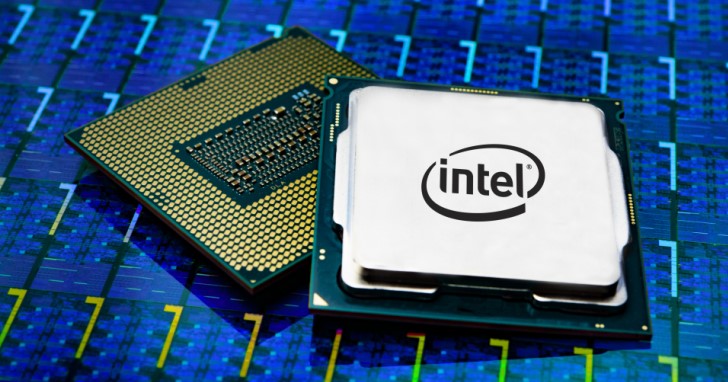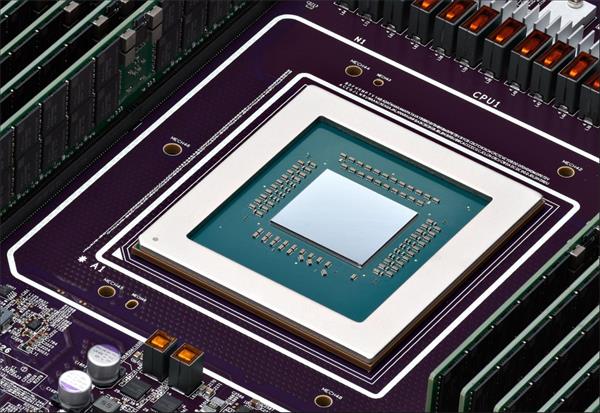Intel: A Comprehensive Introduction of the Chip Giant
In today's rapidly advancing technological era, the importance of chips as the core components of modern electronic devices is self-evident. When it comes to chips, one cannot help but mention the globally renowned semiconductor manufacturer, Intel. As the world's largest manufacturer of personal computer components and CPUs, Intel has secured a pivotal position in the semiconductor industry, thanks to its exceptional technological innovation and market insight.
Intel was founded in 1968, with its headquarters located in Santa Clara, California, known as the "heart of Silicon Valley." The company was established by Robert Noyce, a co-inventor of the integrated circuit, and Gordon Moore, the proposer of Moore's Law. Intel's business scope is extensive, encompassing the design, manufacturing, and sale of high-performance chips and technological solutions for computing, networking, and communication. Its main products cover a wide range of areas, including central processing units (CPUs), graphics processing units (GPUs), chipsets, memory, communication, and cloud computing solutions. Intel's products can be found in various fields such as personal computers, data centers, IoT devices, communication equipment, and automobiles.
01 Development History
 Starting with a reputation for producing memory chips, Intel launched the world's first microprocessor, the 4004, in 1971, marking the beginning of a new era in computer technology. It has since continuously introduced new product series, from the 8086 series to the Pentium series, and then to the Core series processors. Throughout this process, Intel has remained at the forefront of semiconductor manufacturing technology, evolving from micrometer to nanometer processes, and innovating continuously from 4-bit to 64-bit microprocessors. It has also collaborated with industry partners to develop innovative products and promote the establishment of industry standards. At the same time, Intel began transitioning from a PC-centric company to a data-centric one, increasing its investment in cutting-edge technologies such as artificial intelligence, autonomous driving, 5G communication, and edge computing. Through acquisitions of companies like Altera and Mobileye, Intel has further strengthened its capabilities in programmable logic devices and autonomous driving technology.
Starting with a reputation for producing memory chips, Intel launched the world's first microprocessor, the 4004, in 1971, marking the beginning of a new era in computer technology. It has since continuously introduced new product series, from the 8086 series to the Pentium series, and then to the Core series processors. Throughout this process, Intel has remained at the forefront of semiconductor manufacturing technology, evolving from micrometer to nanometer processes, and innovating continuously from 4-bit to 64-bit microprocessors. It has also collaborated with industry partners to develop innovative products and promote the establishment of industry standards. At the same time, Intel began transitioning from a PC-centric company to a data-centric one, increasing its investment in cutting-edge technologies such as artificial intelligence, autonomous driving, 5G communication, and edge computing. Through acquisitions of companies like Altera and Mobileye, Intel has further strengthened its capabilities in programmable logic devices and autonomous driving technology.
02 Recent Key Events at Intel
Technological Breakthroughs
● At the IEDM 2024, Intel showcased a 6nm gate length technology based on Silicon RibbonFET CMOS. This technology represents the cutting edge of transistor design, demonstrating Intel's strong research and development capabilities through innovative gate lithography processes, optimized work function engineering, and effective control of short channel effects, marking an important step in advanced process technology.
● In June 2024, Intel announced its next-generation Lunar Lake architecture, which features a significant performance boost in the E-core efficiency core, with a substantial reduction in power consumption, resulting in notable improvements in both single-thread and multi-thread performance. The combination of P and E cores can flexibly adapt to various application scenarios with different performance and power requirements.
● In January 2025, at CES 2025, Intel unveiled its first Intel 18A process chip, the Intel Panther Lake processor, with plans to begin mass production in the second half of 2025.

Organizational Adjustments
On December 1, 2024, CEO Pat Gelsinger retired and stepped down from his board position. The board established a search committee to find a successor, and David Zinsner and Michelle Johnston Holthaus were appointed as interim co-CEOs.
Business Adjustments
Intel introduced the IDM 2.0 plan, separating its foundry business. Although it currently faces challenges in competing with foundries like TSMC, this represents an attempt at business transformation. Additionally, Intel has entered into a strategic partnership with Amazon AWS to manufacture custom AI chips. In terms of market layout in China, Intel has been deeply involved in Chengdu for many years, and on November 28, 2024, it further increased its investment by 2.1 billion to expand its Chengdu base.
03 Future Development Trends
In the field of technology, Intel will continue to focus on the development of advanced process technologies, such as planning to introduce the Intel 10A process by the end of 2027, and promote the construction of fully intelligent and automated factories. At the same time, amidst the wave of artificial intelligence, Intel has launched a full-stack AI product portfolio, including the Core Ultra processor, Xeon Scalable processor, Gaudi deep learning accelerator, and Intel GPU, and continues to explore AI PC technology, such as focusing on the next-generation AI PC technology at CES 2025.
In terms of market competition, Intel faces challenges from strong competitors such as AMD, NVIDIA, Samsung, and TSMC. To address the competition from the ARM ecosystem, Intel has jointly established an X86 ecosystem advisory group with AMD and collaborated with multiple industry partners to enhance the compatibility and consistency of X86 products.
04 Conclusion
As a pioneer in the semiconductor industry, Intel has driven tremendous progress in global computer technology over the past few decades, from its initial memory chips to today's high-performance processors, through continuous innovation. Despite facing challenges such as declining performance, fierce market competition, and business transformation, its active exploration in technology research and development, product innovation, and strategic layout still demonstrates its strong foundation and development potential. Whether Intel can continue to lead the development trend of the semiconductor industry, maintain its leading position in advanced technologies, and adapt to the rapid changes in market demands remains to be closely watched.
Conevo electronic Solutions
Conevo Elec is an independent distributor specializing in integrated circuits components. Since its founding, it has focused on providing professional IC products and services to companies worldwide. For any inquiries or information on electronic components, contact Conevo. Below are some currently popular semiconductor parts.
1. The AD5305ARMZ is a 4-channel, 8-bit digital-to-analog converter (DAC) from Analog Devices, featuring a 2.5 V to 5.5 V operating voltage range and a low power consumption of 500 µA at 3 V. The DAC provides rail-to-rail output swing with a slew rate of 0.7 V/µs and includes features such as power-on reset, software clear, and data readback capabilities.
2. The 70V659S12BCI is a high-speed, 3.3V asynchronous dual-port static RAM from Renesas Electronics Corporation, featuring 128/64/32K x 36 memory configuration. It supports true dual-port memory cells, allowing simultaneous access to the same memory location, and offers full on-chip hardware support for semaphore signaling between ports.
3. The LT1175CS8#PBF is a negative low dropout (LDO) linear voltage regulator from Linear Technology, featuring an adjustable output voltage range from -20V to -4.3V, a low dropout voltage of 500mV, and a maximum output current of 0.5A. It is packaged in an 8-pin SOIC and is designed for low power applications, with a quiescent current of 45μA and a shutdown current of 10μA.
Website: www.conevoelec.com
Email: info@conevoelec.com








